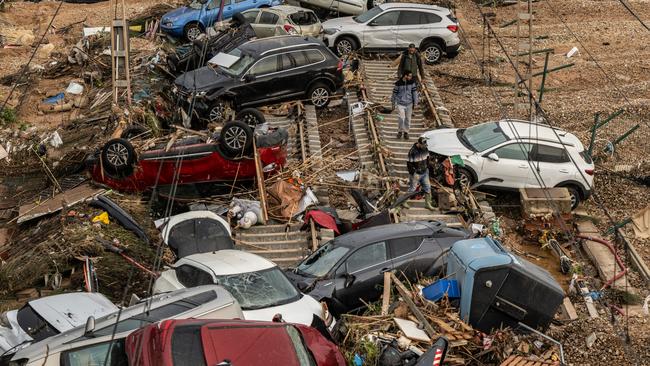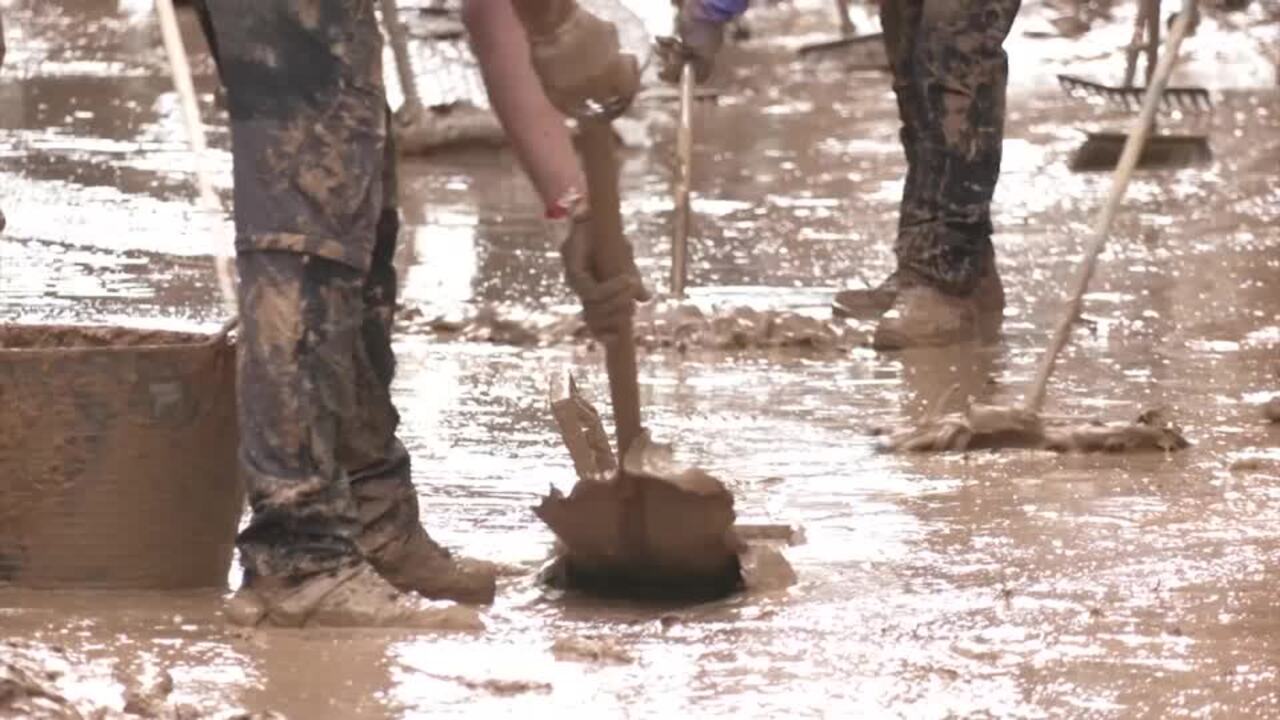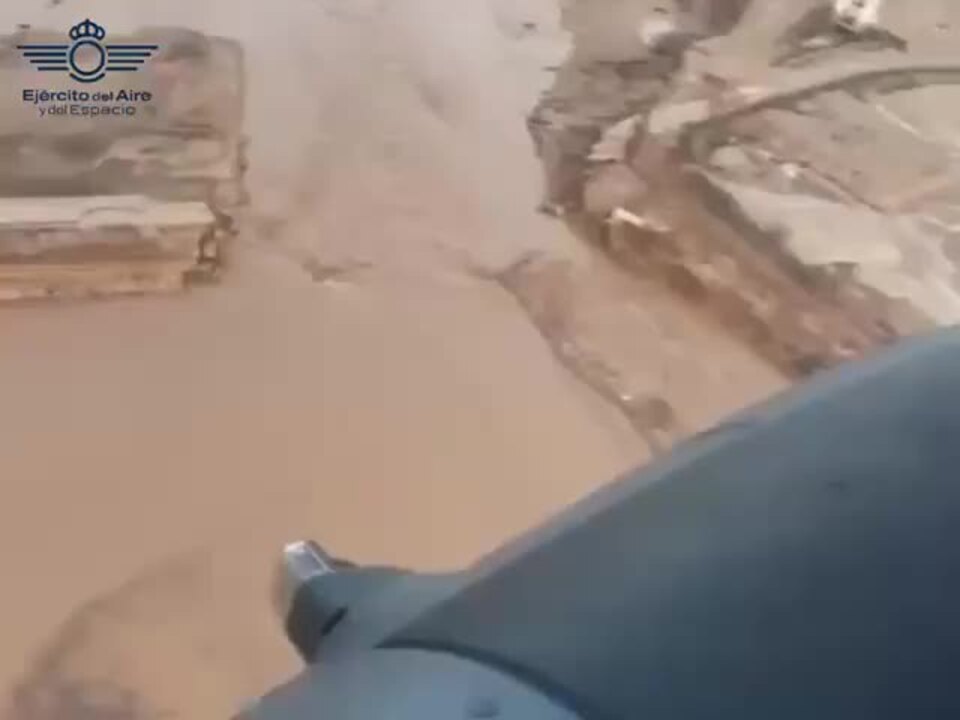How deadly flooding ravaged Spain’s Valencia
Valencians are familiar with the regular drenchings of the ‘gota fría’ – heavy rainfall that forms when a mass of cold air sweeping across Spain hits the Mediterranean coast’s warm air. This week was different.

As Spaniards start to clean the mud and mourn their dead, people are searching for answers as to why the floods brought such devastation to the Valencia region.
Valencians are familiar with the regular drenchings of the “gota fría” or “cold drop” – heavy rainfall that forms when a mass of cold air sweeping quickly across Spain hits the warm, humid air of the Mediterranean coast.
This week was different. Locals said the intensity of the rain was unprecedented, and the deluge swept highly populated areas in a matter of minutes.
At least 205 people were killed in Spain after the country saw some of the worst flooding in its history overnight Tuesday, according to official government figures. Of them, 202 died in the Valencia region alone. An undisclosed number of people remain missing.
The risk that such a catastrophic storm posed on the region was well understood, civil engineers say, but funding projects to mitigate the dangers haven’t gained much attention.
The Valencia region, on the eastern coast of Spain, is home to more than five million people and gave birth to the internationally known rice dish of paella. Its largest city and capital is also named Valencia.
The state meteorological agency had warned of the arrival of a storm of great intensity, but the cell alerts system, run by the regional government, has come under scrutiny by locals. Valencians said the first text messages alerting them that the weather could worsen and urging people to avoid all travel were sent on Tuesday evening, hours after the torrential rains became rivers of mud, flooding small towns south of the city of Valencia.

María Isabel Albalat, the mayor of Paiporta, one of the hardest-hit towns, said the first warning from authorities came about 2 1/2 hours after the water began to rise, when “the water was 2 1/2 meters high and the damage was done,” she told El País newspaper.
Local authorities have said they have a protocol for sending alerts that aims to avoid a panic.
The regional government of Valencia didn’t respond to a request for comment on Friday, a bank holiday in Spain.
The communication breakdown had deadly consequences, said Hannah Cloke, professor of hydrology at the University of Reading in England.
“We know something has gone dreadfully wrong there because we have the technology to say this rain was coming, and yet people on the ground have died, and other people’s livelihoods have been destroyed, and chaos has ensued,” Cloke said.
Civil engineers said the city of Valencia was spared the worst thanks to the hydraulic dam of Forata and the rerouting of the Turia river away from the city centre. These infrastructure works were made after the great flood of Valencia in 1957, when an overflowing Turia killed at least 81 people.
Hydraulic infrastructure plans to protect towns south of the city, where most of the rain fell this week, were never realised. An infrastructure program to protect small towns from these overflows was drawn up 15 years ago and required about 200 million euros ($217 million) at the time, but the investment since 2008 has been minimal, said Federico Bonet Zapater, civil engineer at the Polytechnic University of Valencia.

The rescue efforts are currently focused on six towns south of the city of Valencia: Algemesí, Paiporta, Requena, Ribarroja, Torrent and Utiel.
“Very often, these plans are not implemented because these works require a lot of investment and they’re in remote areas that don’t attract the attention of politicians,” Bonet said, adding that public awareness rises after each big storm, just to fade away over time.
Local experts feared a catastrophe like this could hit the region, said Félix Francés, an hydraulic engineer at the Polytechnic University of Valencia. He estimates damages could reach about EUR2 billion. Implementing the infrastructure plans would cost up to EUR500 million today.
“We all knew this was a bomb,” he added. “As an expert, I’m outraged at this failure.” The weather on the Spanish Mediterranean coast alternates long periods of drought with spells of torrential rains in the early fall. The river banks, which spend most of the year dry, can suddenly receive a deluge of water that sweeps everything on its way to the plain and the sea.
Bonet said the fertile Valencian plain, which has historically received much of this water, has become a densely industrialised and populated area.
A triple whammy of weather and geography combined to unleash the deadly floods in Valencia, while climate change likely made the rainfall more intense, according to weather experts.
“The event per se is not extraordinary,” said Carlo Buontempo, director of the Climate Change Service of the European Centre for Medium-Range Weather Forecasts. “What is peculiar is just the sheer amount of precipitation.”
Some weather stations recorded close to 16 inches of rain in less than six hours, more than a year’s worth of precipitation. Buontempo called that amount “enormous.”

That rainfall was about 12 per cent heavier and twice as likely to occur as compared with the preindustrial climate, according to an analysis by World Weather Attribution, a group of European and U.S. researchers based in London.
Buontempo said the high-altitude cold front from the Atlantic Ocean collided with warm moist air from the Mediterranean Sea, which reached an all-time record high sea surface temperature in late August. That summer heat has remained, fuelling extra energy and humidity to the cycle of storms.
Mountains along Spain’s eastern coastal region drove the moist air aloft and kept the storm growing stronger, Buontempo said.
There is a drought in the region, which exacerbated the impact of the torrential rainfall, said Cloke with the University of Reading. “It means the water is rushing off the land because it’s a bit like concrete, ” she said.
Intense storms hit the Mediterranean basin every year, including a powerful tropical cyclone that struck Libya in September 2023 and killed more than 4,300 people when a dam collapsed. A strong storm capsized a 180-foot luxury superyacht moored off the coast of Sicily in August, killing seven people including British tech mogul Mike Lynch.
“Every year we record severe storms in the Mediterranean,” said Omar Baddour, head of the climate monitoring section of the World Meteorological Organisation, a U.N. agency based in Geneva. “The problem is that sometimes it comes to a place where there is a high density of population and the urbanisation makes it very difficult for the water to go into the ocean very quickly.” Buontempo said such disasters will continue unless weather agencies and local authorities can better cooperate.
“The challenge is not only generating a warning, but also ensuring that there is a chain of command that can respond to this warning and take action on the ground,” Buontempo said. “That’s becoming more difficult globally, because we are seeing these unprecedented events becoming more and more common.”
Dow Jones


